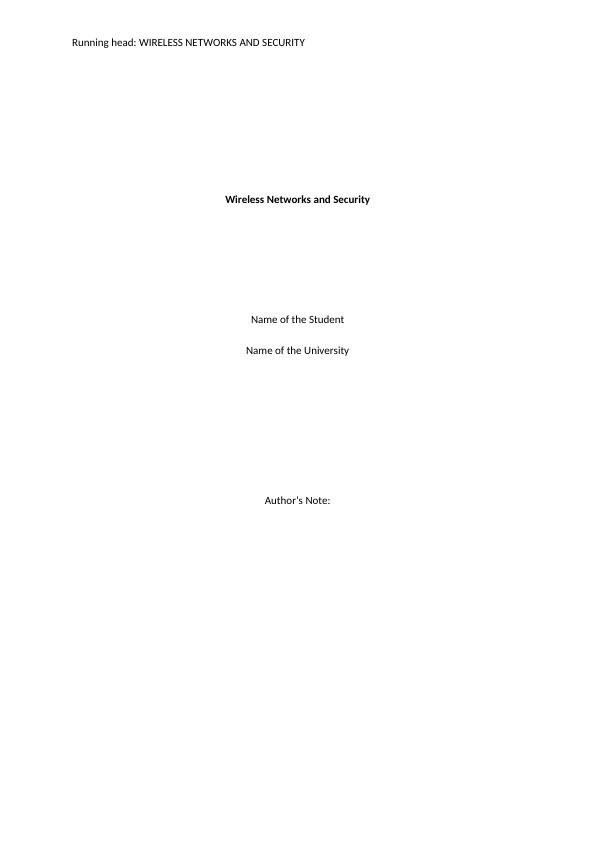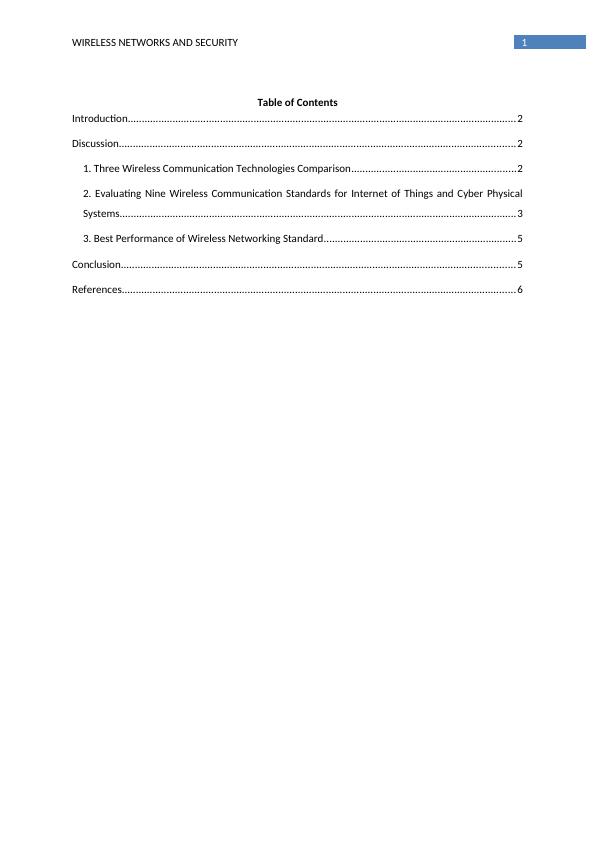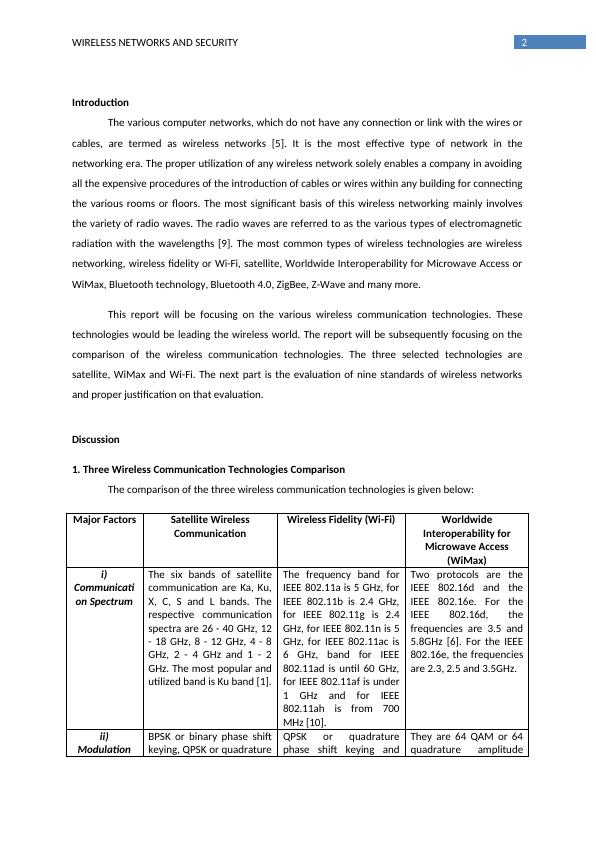Ask a question from expert
Wireless Networks and Security Name of the University Author's Name
7 Pages1934 Words291 Views
Added on 2021-06-17
About This Document
The most common types of wireless technologies are wireless networking, wireless fidelity or Wi-Fi, satellite, Worldwide Interoperability for Microwave Access or WiMax, Bluetooth technology, Bluetooth 4.0, ZigBee, Z-Wave and many more. The frequency band for IEEE 802.11a is 5 GHz, for IEEE 802.11b is 2.4 GHz, for IEEE 802.11g is 2.4 GHz, for IEEE 802.11n is 5 GHz, for IEEE 802.11ac is 6 GHz, band for IEEE 802.11ad is until 60 GHz,
Wireless Networks and Security Name of the University Author's Name
Added on 2021-06-17
BookmarkShareRelated Documents
End of preview
Want to access all the pages? Upload your documents or become a member.
Wireless Network and Security - Assignment
|8
|2350
|16
Wireless Network and Security
|8
|2312
|88
Wireless Network and Security: Assignment
|9
|2205
|22
Wireless Network and Security
|11
|2385
|203
Wireless Network and Security Name of the University Author's Name
|9
|2695
|285
Wireless Networks and Security - Doc
|9
|2701
|60


